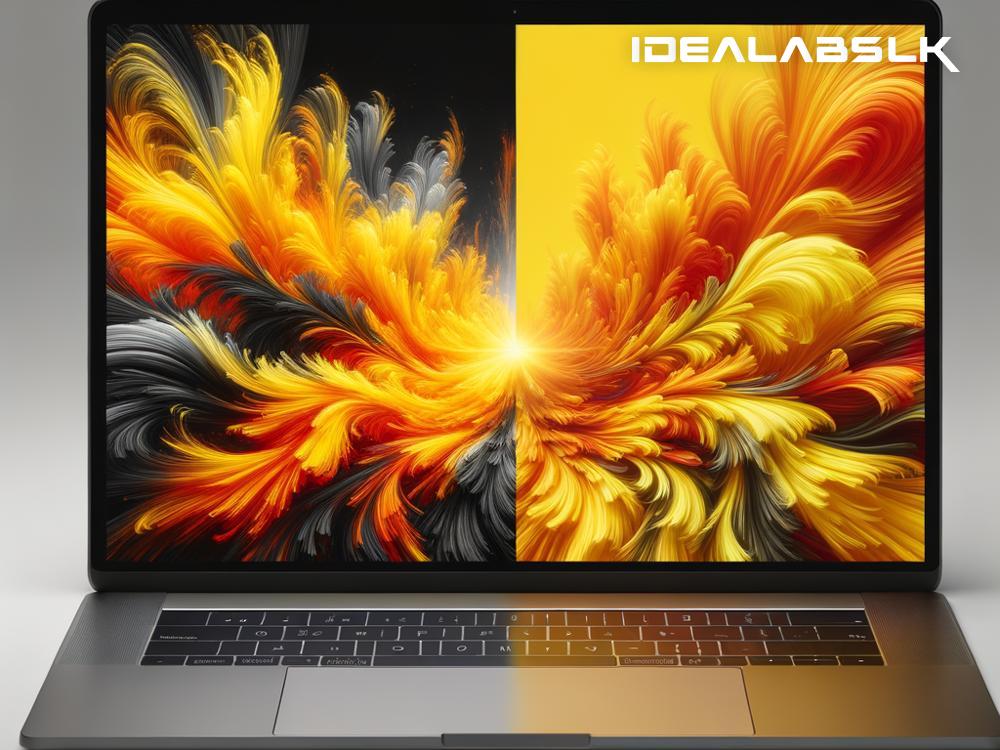Why Does Your Laptop Screen Have a Yellow Tint?
Have you ever fired up your laptop, expecting to dive into your work or a movie, only to find that the colors seem... off? Instead of the usual bright and crisp display, you're greeted by a screen that seems like it's bathed in sunshine – except, it's not the warm, feel-good kind of sunshine, but an odd, yellowy tint overlaying everything. Before you start panicking, thinking your laptop’s days are numbered, let’s break down the common reasons why your laptop screen might have taken on a yellowish hue and what you can do about it.
1. Night Light or Blue Light Filter
The most common and easily fixable reason your screen might be yellow is because of a Night Light or Blue Light filter setting. These settings reduce blue light emissions from your screen, which can make it easier on your eyes and potentially help you sleep better if you use your device before bed. Depending on your operating system, the feature might be called "Night Shift" on macOS, "Night Light" on Windows, or something similar on Linux distributions.
Solution: Simply go to your display settings and adjust the Night Light feature. You can turn it off, schedule it according to your preferences, or adjust the intensity of the effect.
2. Color Calibration Issues
Sometimes the display colors might be out of whack due to incorrect color calibration settings. Each laptop screen is slightly different, and sometimes the default settings might not be perfect for your specific unit.
Solution: Dive into your device's color calibration settings. On Windows, you can find this by searching for "Color Calibration" in the Start menu. Mac users can go to System Preferences > Displays > Color > Calibrate. You can then follow the steps to adjust your display to get rid of that pesky yellow tint.
3. Graphics Driver Issues
The software that controls how your device communicates with its display, known as the graphics or video driver, could be outdated or corrupted, causing display issues like a yellow tint.
Solution: Check for updates for your graphics drivers. On Windows, this can be done through the Device Manager. Mac users generally receive these updates through the system updates. Sometimes, a simple update can rectify the issue.
4. Hardware Problems
Unfortunately, not all causes of a yellow-tinted screen are as easy to fix. In some cases, the problem might be due to a hardware issue with the screen itself or the cable connecting the screen to the motherboard. This is more likely if the yellow tint is partial, appearing in blotches, or if it varies when you adjust the screen's angle.
Solution: If you suspect a hardware problem, the best course of action is to contact the manufacturer if your laptop is still under warranty. Otherwise, consult with a professional repair service. Self-repair could cause further damage if you’re not experienced in electronics repair.
5. Third-Party Applications
Some third-party applications designed to adjust your screen's display settings can also cause a yellow tint. This is common with software intended to reduce eye strain by adjusting the color temperature of your screen.
Solution: Check if you have any such applications installed and either adjust their settings or uninstall them to see if that resolves the issue.
6. Environment and Perception
Interestingly, sometimes it's not actually your screen that's the problem. The perceived color temperature of your screen can change based on the lighting of your environment. Additionally, after looking at a screen without these yellow tints for a long time, your eyes might adjust in such a way that a normally calibrated screen appears yellow.
Solution: Adjust the room's lighting or take regular breaks to prevent your eyes from adjusting too much to any screen's color temperature.
Conclusion
A yellow tint on your laptop screen can be annoying, but it's often a solvable problem. Whether it’s a simple settings tweak or a more complex hardware issue, there’s usually a way to get your screen back to its proper display colors. Always start with the easiest solutions before moving on to the more complex ones. If all else fails, seeking professional help is the best course of action to ensure your laptop returns to its full glory. Happy troubleshooting!

